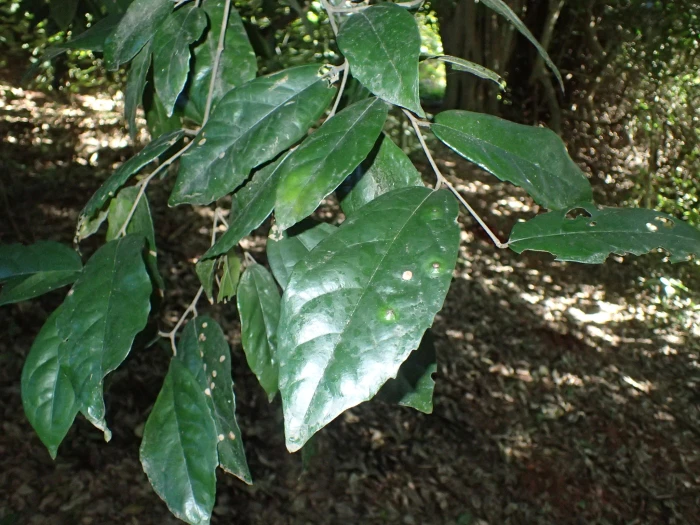Natal White Stinkwood
(Celtis mildbraedii)
Natal White Stinkwood (Celtis mildbraedii)
/
/

Mahomed Desai
CC BY 4.0
Image By:
Mahomed Desai
Recorded By:
Copyright:
CC BY 4.0
Copyright Notice:
Photo by: Mahomed Desai | License Type: CC BY 4.0 | License URL: http://creativecommons.org/licenses/by/4.0/ | Rights Holder: Mahomed Desai | Publisher: iNaturalist | Date Created: 2022-05-02T10:11:21-07:00 |



















Estimated Native Range
Climate Requirements for Moscow, Idaho
| This Plant | Your Site | Plant Suitability for Your Location | ||
|---|---|---|---|---|
| • Precipitation | 23" - 103" | 25" | Your precipitation may be insufficient for this plant. Irrigate N" / year. | Irrigate N" / year |
| • High Temp. | 76°F - 98°F | 84°F | Your summer temperatures are normal for this plant. | Excellent |
| • Low Temp. | 37°F - 73°F | 23°F | Your winter temperatures may be too cold for this plant | Too cold |
This plant should grow well at your location with about N inches per year (Y minutes per month) of irrigation.
Summary
Celtis mildbraedii, commonly known as Natal White Stinkwood or Red-fruited White-stinkwood, is a deciduous forest tree native to a variety of habitats including moist semi-deciduous forests, riverine forests, and coastal forests in parts of South Africa, Mozambique, Zimbabwe, and extending through West Africa to Sudan, DRC, Angola, and Tanzania. It is a dominant species in Ghana’s moist semi-deciduous forests and plays a crucial role in these ecosystems. The tree typically grows to a height of 20-30 meters with a straight trunk and a rounded canopy. The bark is pale grey and smooth when young, becoming rough and fissured with age. The leaves are simple, alternate, and ovate with serrated margins. It produces small, inconspicuous flowers followed by bright red, berry-like fruits that are an important food source for primates in Uganda.
Natal White Stinkwood is valued for its hard, durable timber, which is used in construction and furniture making. It is also planted for shade and ornamental purposes in larger landscapes due to its attractive form and foliage. In cultivation, it prefers full sun to partial shade, requires moderate water, and thrives in well-drained soils. While it is not commonly found in nurseries, it can be propagated from seed or cuttings. Gardeners should be aware that the tree can be susceptible to root rot if planted in poorly drained soils.CC BY-SA 4.0
Natal White Stinkwood is valued for its hard, durable timber, which is used in construction and furniture making. It is also planted for shade and ornamental purposes in larger landscapes due to its attractive form and foliage. In cultivation, it prefers full sun to partial shade, requires moderate water, and thrives in well-drained soils. While it is not commonly found in nurseries, it can be propagated from seed or cuttings. Gardeners should be aware that the tree can be susceptible to root rot if planted in poorly drained soils.CC BY-SA 4.0
Plant Description
- Plant Type: Tree
- Height: 50-65 feet
- Width: 35-50 feet
- Growth Rate: Moderate
- Flower Color: N/A
- Flowering Season: Spring
- Leaf Retention: Deciduous, Semi-deciduous
Growth Requirements
- Sun: Full Sun, Part Shade
- Water: Medium
- Drainage: Medium
Common Uses
Low Maintenance
Natural Habitat
Moist semi-deciduous forests, riverine forests, and coastal forests
Other Names
Common Names: Angwabele, Kayombo, Menubana, Mongambe, Red-Fruited Stinkwood, Ohia
Scientific Names: Celtis mildbraedii, Celtis bequaertii, Celtis bequaertii, Celtis compressa, Celtis dubia, Celtis dubia, Celtis franksiae, Celtis usambarensis
GBIF Accepted Name: Celtis mildbraedii